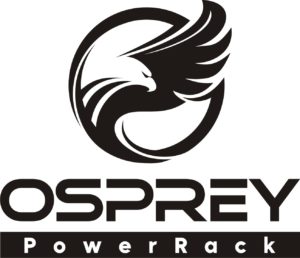Helping to Power Puerto Rico
Helping to Power Puerto Rico

October 27, 2017
Author:
Brian Boguess, Nuance Energy Group, Inc.
6 Crow Canyon Road, San Ramon, CA 94583
Nuance Energy and its strategic partner Tabuchi America are donating 51kW of solar+storage to help in the disaster recovery efforts in Puerto Rico. As of this writing (over a month after Hurricane Maria), nearly 80% of the island’s residents remain without power, and some observers on the ground there predict it may take over a year before power is fully restored.
Also as of this writing, the ten 5kW systems are being staged in Jacksonville, Florida awaiting shipment. So exactly how this donation will be put to its best use has yet to be determined, and I will post an update to this unfolding story when it is. But I can at least comment on four aspects of the Osprey PowerPlatform® that make its patent-pending design ideal for disaster response and recovery efforts.
The first is that an entire modular 5kW PowerPlatform—with the 16x320W solar panels attached—can be pre-assembled and folded for efficient transport on a truck or trailer, or in a shipping container. It is interesting to note that all three forms of shipment may end up being needed before all ten systems arrive at their ultimate destination(s).
The second aspect is the unprecedented ease of installing a ground mount solar array, which is made possible by the Osprey’s innovative design and unique earth anchor foundation system. The entire solar+storage system, including the Tabuchi Eco Intelligent Battery System (EIBS) containing the inverter and battery storage, can be unfolded and installed by a three-person crew using only handheld tools in about an hour. No heavy equipment. No concrete.
The third aspect is the ability of the PowerPlatform to work well on the toughest terrain and with virtually any type of soil. On a hill. On a sandy beach. Over rocks. In a parking lot. Wherever its needed, relief workers can count on the Osprey.
Fourth and finally is that the entire system can be quickly and easily uninstalled to be “lifted and shifted” to another site or stored in preparation for the next disaster. The only thing left behind are the relatively inexpensive earth anchors, and those can even be removed if necessary.
Of course, it’s possible that one or more of these systems will remain installed as part of a permanent microgrid. (Yes, the Osprey has been certified to withstand a 150MPH, hurricane-force wind.) Distributed microgrids provide a more resilient alternative to a transmission-distribution grid with the centralized generation, but that’s a topic for another post.
Anyone interested in this post’s topic might also be interested in reading an article titled Getting Serious about Solar for Disaster Response and Recovery that I wrote recently for Renewable Energy World.
To learn more about our complete range of turnkey solar solutions for your project, schedule a free consultation with the Nuance Energy team today.
Save Time & Money on Your Next Solar Project
Request a QuoteRECENT POSTS
- DPW Solar vs Nuance Energy Mounted Solar Options: Cost & Benefits
- Geotechnical Report Cost & Requirements For Solar Projects
- Are Solar Panels Worth It In Nevada? Costs & Options
- OSPREY PowerRack Ground Mount System Compatibility: Single- and Dual-Axis Trackers
- Rammed Earth Foundation For Solar Arrays: Cost, Pros & Cons
- Agrivoltaics Explained: Solar & Agriculture Combined
- Large Scale Solar Systems Options: Pros & Cons
- Best Solar Options For Farms & Agriculture: Cost, Pros & Cons
- Unirac vs MT Solar Mounted Options: Cost & Benefits
- IronRidge vs Grengy Mounted Solar Options: Cost & Benefits

